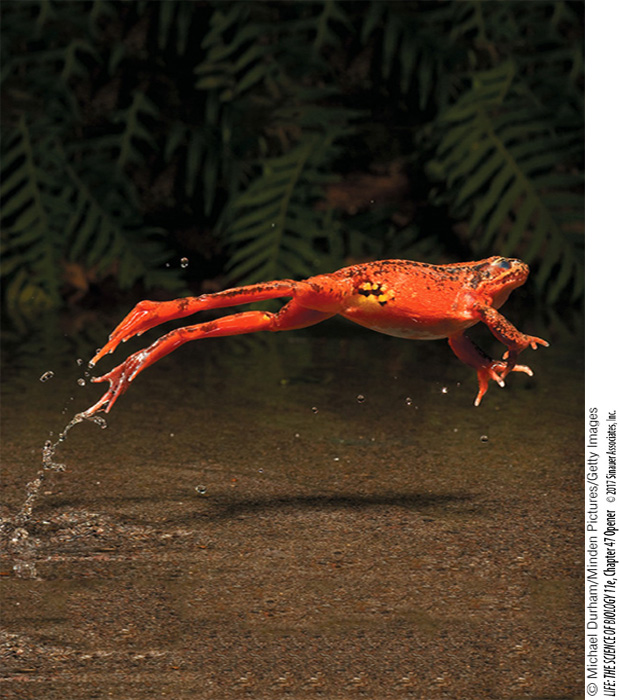Chapter Introduction
Musculoskeletal
Systems

investigating life
Champion Jumpers
The women’s long jump Olympic record is 7.4 meters, set in 1988 by Jackie Joyner-
Both jumps were powered by skeletal muscle. The cellular mechanisms of muscle contraction are the same in the frog and the human, so why is the frog’s jump more impressive? The answer involves the concept of leverage, which depends on the muscles and skeletal elements working together. Muscles pull on bones that are connected at joints to make levers. With a lever you can use the same force to move a large mass a small distance or a small mass a large distance. The ratio of leg length to body mass is greater for the frog than for the human. Thus the frog’s long legs can move its small body mass a long distance.
The power for the frog’s jump comes from a single contraction of its leg muscles (there is no sprint), and those muscles contract only a very short distance compared to the length of the jump. One species of frog, Rana pipiens, has a body length of only 11 centimeters. It has much longer legs, but muscles that power its jump are only about 3.5 centimeters long and shorten by just 0.75 centimeters (21%) when the frog jumps. Once again leverage comes into play. The thigh muscles are attached to the lower leg bones close to the knee joint, thus they can move the opposite ends of those bones over a longer distance and more quickly than if they were attached farther away from the joint. There is a trade-
What adaptations optimize the jumping muscles of the frog?